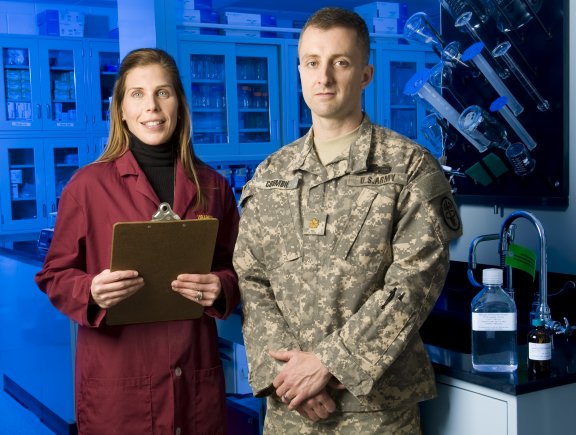Army studying special operators' nutritional needs

A typical service member in garrison needs to consume about 3,250 calories a day for sustenance. Maj. Aaron Crombie, Ph.D., is in the process of estimating how much more a special operator should eat.
Crombie, who works for the Military Nutrition Division at the U.S. Army Research Institute of Environmental Medicine, or USARIEM, at Natick Soldier Systems Center, Mass., is leading a team that has been studying special operations forces at training venues around the country to discover that. Results will be used to adjust the Basic Daily Food Allowance, or BDFA, for dining facilities that serve their meals.
"We know that these guys move a lot," Crombie said. "They train a lot. Some of them are doing two-a-day workouts. They spend a lot of time in the gym, a lot of time at the ranges."
This isn't the first time USARIEM has studied special operators' needs in garrison, said Andrew Young, Ph.D., chief of the Military Nutrition Division.
"The Special Forces have long argued that their people work harder and sustain much higher rates of energy expenditure than the average Soldier when they're training in garrison and subsisting in dining facilities," Young said. "As a result, they argue that their dining facilities should be able to be provided more money per diner to provide more food and extend their operations accordingly to better meet the nutritional requirements of these more highly active special operations units that are training in garrison."
The current USARIEM study began at the Combat Diver Qualification Course in Key West, Fla. Crombie said preliminary results indicate that service members at that venue needed 4,600 calories a day. Data from Fort Bliss, Texas, and Fort Bragg, N.C., will also be included in the study.
"Dive school is probably going to be the high end of the spectrum," Crombie said. "We should be done collecting data (by the) end of March."
According to Young, nutritional energy requirements are assessed using what's called the "doubly labeled water technique." At the beginning of testing, service members drink water enriched with natural isotopes.
"You can then measure the decline in those isotopes in the body," Young said. "Based on the rate those isotopes decline, we can actually calculate the rate of carbon dioxide loss from the body, which in turn provides an accurate estimate of the rate that the body is burning calories. We compare the caloric burn rate in the Special Forces Soldiers to data we have measured in Soldiers from other types of units.
"We get a representative sample of the Special Forces unit members who are engaged in representative activities. We track them during the course of about five to seven days of training."
Crombie said that previous studies have shown special operators burn as many as 40 percent more calories in garrison activities than other service members do. The report from the current USARIEM study should be available sometime this summer, he added.
"They're bigger guys," said Crombie of the special operators. "They have more muscle, so that's more calories they're burning just moving around. They carry a lot of equipment."
Crombie had nothing but compliments for the study subjects and their high level of cooperation with his team.
"They've been really compliant. They've been really interested in what we're doing," Crombie said. "It's been a good experience working with the units and working with the guys that coordinated (it), because they are really on point."














